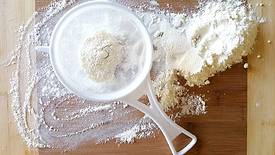Sanitation
ARTICLES
Although the 3-A Standards are not regulations, many regulatory authorities treat them as such to permit the use of equipment for food or dairy processing
Read More
Facilities Focus: Manage Your Physical Plant as a Prerequisite
Failure to properly manage and maintain your physical plant can result in foodborne illness, recalls, and even plant closures
December 11, 2024
Sponsored Content
Turn Food-Safety into a Competitive Advantage - Watch How in Ammeraal Beltech Exclusive video
November 22, 2024
EVENTS
Webinar
4/17/24 to 4/17/25
Contact: Vania Halabou
Sustainable Wet Sanitation for Equipment Protection: Finding the Right Balance
Webinar
8/29/24 to 8/29/25
Contact: Vania Halabou
Understanding and Addressing Biofilm Communities and Behavior in the Food Plant
Webinar
9/18/24 to 9/18/25
Contact: Vania Halabou
Beyond Blueprints: Identifying Pest Risks in Your Building Design
Never miss the latest news and trends driving the food safety industry
eNewsletter | Website | eMagazine
JOIN TODAY!Copyright ©2024. All Rights Reserved BNP Media.
Design, CMS, Hosting & Web Development :: ePublishing










